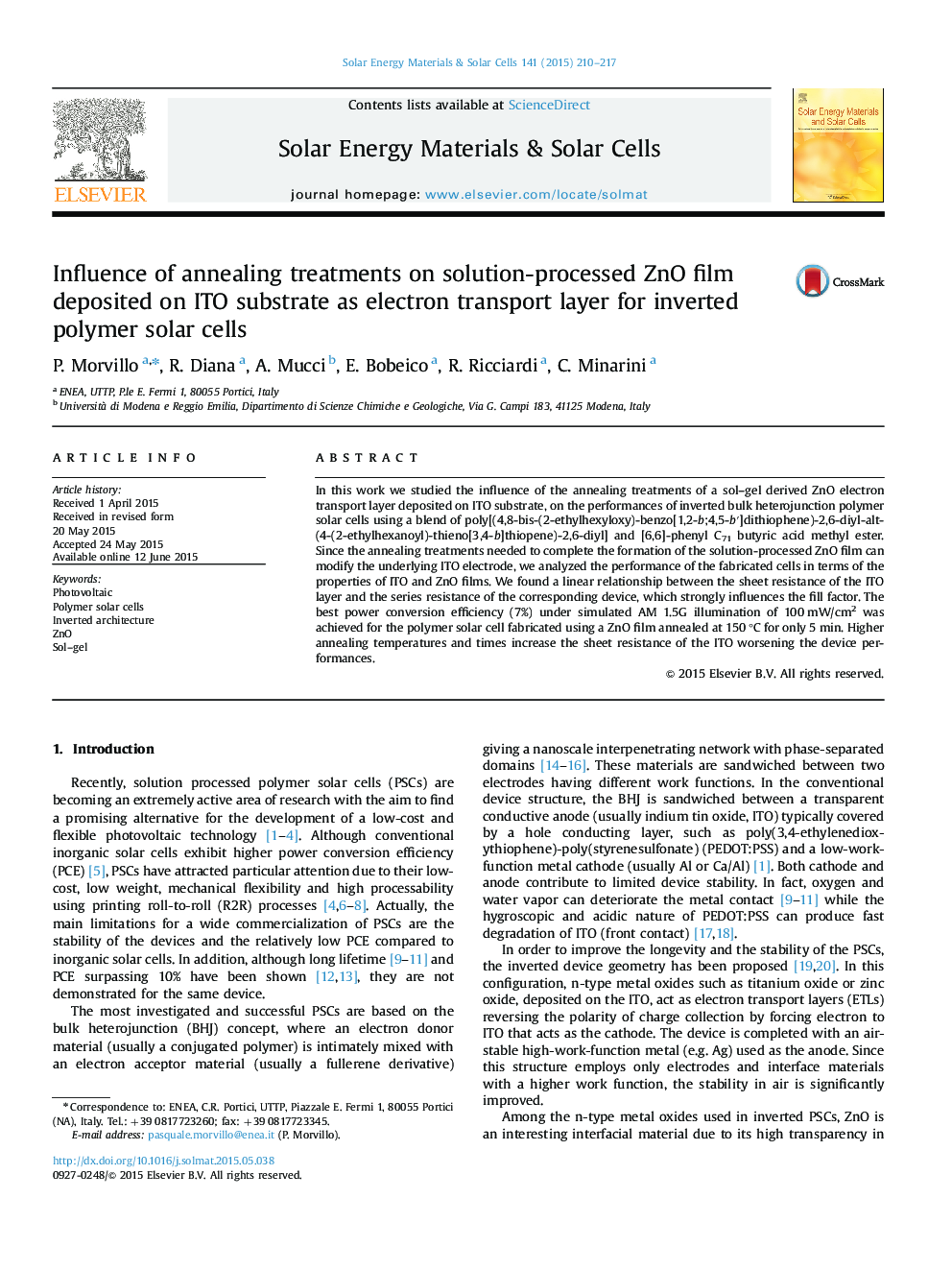| Article ID | Journal | Published Year | Pages | File Type |
|---|---|---|---|---|
| 77743 | Solar Energy Materials and Solar Cells | 2015 | 8 Pages |
•We realized a solution-processed ZnO thin film as electron transport layer for PSCs.•We studied the effect of the annealing on the properties of ZnO and ITO layers.•The best PCE (7%) was achieved using a ZnO film annealed at 150 °C for only 5 min.•The ITO sheet resistance increases upon annealing worsening the device performances.•A correlation between the PSC series resistances the ITO sheet resistance was shown.
In this work we studied the influence of the annealing treatments of a sol–gel derived ZnO electron transport layer deposited on ITO substrate, on the performances of inverted bulk heterojunction polymer solar cells using a blend of poly[(4,8-bis-(2-ethylhexyloxy)-benzo[1,2-b;4,5-b′]dithiophene)-2,6-diyl-alt-(4-(2-ethylhexanoyl)-thieno[3,4-b]thiopene)-2,6-diyl] and [6,6]-phenyl C71 butyric acid methyl ester. Since the annealing treatments needed to complete the formation of the solution-processed ZnO film can modify the underlying ITO electrode, we analyzed the performance of the fabricated cells in terms of the properties of ITO and ZnO films. We found a linear relationship between the sheet resistance of the ITO layer and the series resistance of the corresponding device, which strongly influences the fill factor. The best power conversion efficiency (7%) under simulated AM 1.5G illumination of 100 mW/cm2 was achieved for the polymer solar cell fabricated using a ZnO film annealed at 150 °C for only 5 min. Higher annealing temperatures and times increase the sheet resistance of the ITO worsening the device performances.
